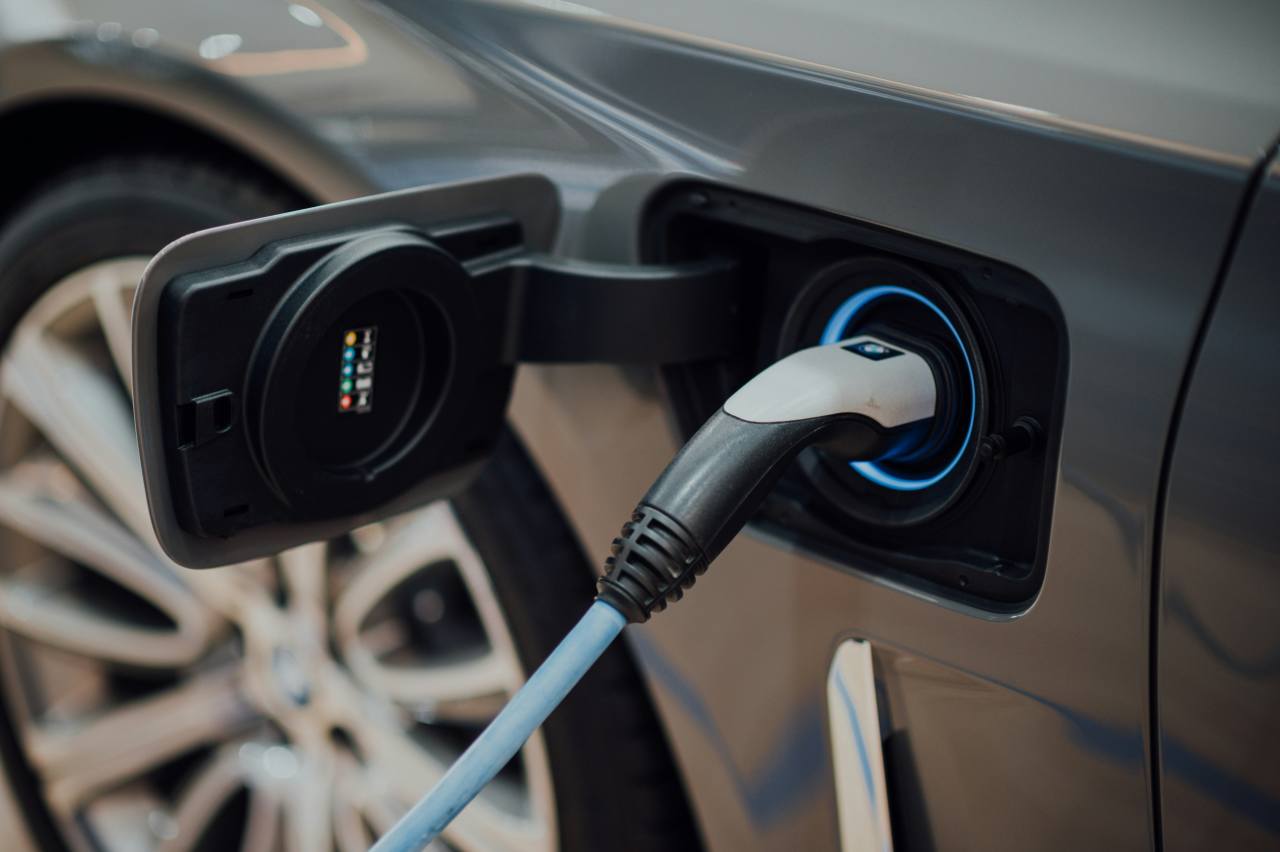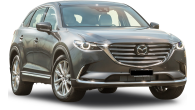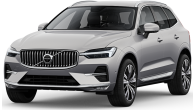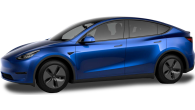Close to a decade ago BMW took a swan dive into the fully-electric car pool, with the i3, a compact, lightweight hatch, that although long gone from the Aussie market, remains in production. It features an exotic carbon passenger cell, and is pitched at a niche, city-dwelling audience.
The decision makers in Munich have decided to draw the curtain on it in mid-2022, because they’re moving from the EV springboard to the high tower.
Yep, BMW says it will be offering around 12 fully electric models worldwide by 2023, with several arriving here soon. And this is the first zero tailpipe emissions BMW X SUV model to arrive in Australia, the mid-size iX3.
Like its X3 siblings it lines up against traditional European SUV rivals, only this time there’s an electric motor rather than a combustion engine under the bonnet. Think Audi e-tron, Jaguar I-Pace, and Mercedes-Benz EQC.
BMW IX3 2022: M Sport
| Engine Type | 0.0L |
|---|---|
| Fuel Type | Electric |
| Fuel Efficiency | 0.0L/100km (combined) |
| Seating | 5 |
| Price From | $66,440 - $76,340 |
Does it represent good value for the price? What features does it come with?
Cost-of-entry to the BMW iX3 club is $114,900, before on-road costs, which is a match for the high-performance, six-cylinder powered X3 M40i at the top of the mainstream X3 range, with the bonkers X3 M another $45K above that.
For that money, aside from the performance and safety tech we’ll get to shortly, you should expect a lengthy standard features list, and the iX3 does well.
Standard are, adaptive LED headlights, adaptive suspension, 20-inch aero alloy wheels, keyless entry and start, an auto tailgate, three-zone climate control, active cruise, a head-up display, a 12.3-inch digital instrument screen, a 12.0-inch multimedia touchscreen, electrically-adjustable and heated front seats (memory function on driver’s side), leather trim (choice of three colours), rain-sensing wipers, Harman Kardon audio (16-speakers, 464W), ambient lighting, wireless Apple CarPlay and Android Auto, sat nav, a panoramic glass roof, wireless smartphone charging, and parking assistant.

There’s also heated and folding exterior mirrors, metallic paint (six colour options), the ‘M Sport’ body kit (aero package with dark metallic exterior elements) BMW even stumps up for a five-year unlimited use subscription to the Chargefox network.

Yes, you heard that right. You can juice up free-of-charge for the first five years, and it’s worth noting the iX3’s claimed range, another important factor in terms of whole-of-life value, lines up well with its prime competitors (BMW iX3 - 460km / Audi e-tron - 446km / Jaguar I-Pace - 470km / Mercedes-Benz EQC - 434km).
Any way you cut it, the iX3 is a pretty sharp deal for the dollars.
EV Specs for BMW IX3 2022
| Drivetrain | Synchronous electric motor |
|---|---|
| Battery capacity | 80kWh |
| Battery type | Lithium-ion |
| Range | 460km (WLTP) |
| Plug type | Type 2 / Type 2 CCS combo |
| DC charge rate | 150kW |
| AC charge rate | 11kW |
| Electric motor output | 210kW/400Nm |
| Efficiency | 18.9kWh/100km |
Is there anything interesting about its design?
The most noteworthy thing about this car’s exterior design is how much it looks like any other BMW X3. No dramatic Hyundai Ioniq 5-style departure from the norm here. You have to have reasonably sharp eyes to spot the details that stand this car apart from its combustion-powered siblings.
For example, the signature kidney grille, with contrasting inserts, remains in place. Yes, it features active air vents, but really it’s more a single-piece branding decoration rather than a functional element.

At first glance the 20-inch rims look much like other styles in the BMW catalogue. But closer inspection reveals large, close to flat and closed in surfaces to help aerodynamic performance.
No small contributor to the car’s drag coefficient (Cd) of just 0.29, an outstanding number for an SUV, or any car for that matter.

Although sci-fi three-dimensional, the tail-light treatment is the same as other X3s and even the broad apertures at each lower rear corner look ready to accept exhaust outlets, which of course, they don’t. The entire rear diffuser panel is part of smoothing the exit of underbody airflow.
The interior look and feel is straight out of the current BMW design playbook, with blue highlights here and there to signify the car’s ‘i’ electric identity.

Classy, yet functional with the big digital screens for instrumentation and multimedia also dialing up the tech factor.

The leather trimmed seats feel as good as they look, the ‘Vernasca’ hide available in a choice of three colours, with different interior trim elements on offer as well.
It feels premium and driver-focused. The alignment, the stitching... A close attention to detail in the cabin’s design and execution is apparent.
How practical is the space inside?
In terms of space, there’s plenty of head and shoulder room up front and lots of storage, including a pair of cupholders in the centre console, big door bins with a separate section for large bottles, a decent glove box, and a medium-size storage cubby which doubles as an armrest between the seats.
There’s a 12-volt outlet, wireless smartphone charging and a USB-A socket in the console, as well as a USB-C jack in the centre storage box.
The big media screen is easy to use with logical screen progressions accessed via direct touch, a rotary dial on the console, the writing pad on top of it, as well as gesture control or ‘Hello BMW’ voice control.
Move to the back and again there’s heaps of space. Over successive generations the X3 has quietly crept up in size to match that of the original X5.
Getting in and out is easy thanks to wide opening doors with big apertures, and sitting behind the driver’s seat set for my 183cm position there’s good head and legroom.
Again, there are big door bins with room for large bottles, individual climate control is a win for back seaters, and there are two USB-C outlets to keep devices powered up.
There are netted map pockets on the front seat backs, and a fold-down centre armrest contains a shallow flip-top compartment and a pair of fold-out cupholders, adjustable for different size cups, which is a thoughtful touch.
A relatively low loading height and no lip into the boot space makes life easy, and with the rear seat upright the iX3 has a capacity of 510L, enough to swallow our three-piece suitcase set, or the bulky CarsGuide pram with room to spare.
Lower the 40/20/40 split-folding rear seat, and load space increases to no less than 1560 litres. And as long as you have the key with you the tailgate’s hands-free open and close kick function is a welcome addition.
Those volume figures are down only slightly on petrol and diesel powered X3s (550L/1600L).
Multiple tie-down anchor points, a 12-volt outlet, as well as pop-out hooks and netted pockets are handy, but don’t bother looking for a spare of any description, your only option is a repair/inflator kit.
A small lidded space under the boot floor is designed for the on-board charging cables, and the tyre inflator canister.
A missed opportunity appears to be the lack of storage space under the bonnet. The combined motor/transmission unit is relatively small and mounted low in the chassis.
Peel back the plastic cover over the ‘engine’ bay and there’s plenty of room for a ‘frunk.’ Seems like a no-brainer, but the bean counters, engineers or some other link in the development chain must have knocked it on the head.
What are the key stats for the powertrain?
Under the bonnet is a ‘current-excited’ synchronous electric motor, single-speed auto transmission and the power electronics bundle placed together in a single housing.
Driving the rear wheels, the motor produces 210kW/400Nm, which is enough to propel the iX3 from 0-100km/h in 6.8 seconds.

The ‘current-excited’ bit means the motor doesn’t make use of magnets to induce the rotor, rather the feeding in of electric power.
It spins up to a maximum of 17,000rpm, and BMW says the design means the use of rare earth elements (the mining of which is increasingly controversial environmentally) is avoided.
How much does it consume? What’s the range like, and what it’s like to recharge/refuel?
Worst case charging scenario is a 1.8kW AC single-phase domestic connection which has you staring down the barrel of a 44-hour charge time.
But using the latest BMW three-phase wallbox, the car's AC maximum rate of 11kW equates to charge time from 0-100 per cent is 7.5 hours. While DC fast-charging at a rate of up to 150kW means 10-80 per cent charge in 32 minutes.
The ports behind the not-fuel flap are a Type 2 for AC and Type 2 CCS (Combined Charging System) Combo for higher powered DC charging. And the car comes with two cables covering domestic and public scenarios.
Worth noting the single recharge point is on the right-hand side. Our driver’s side, but kerb side for left-hand drive countries. No problem at a dedicated charging station. But if you’re street charging, a connector poking out on the traffic side of the car could be risky.
BMW claims energy consumption for the combined cycle of 18.9kWh/100km, and over a week of city, suburban and highway driving, mostly in the default Comfort mode (with A/C on) we recorded an average of 19.1kWh/100km.
Worth noting the car features a regenerative braking system feeding energy back into the battery, but this one’s adaptive, able to read what’s ahead and determine the appropriate intensity of the regen function.
But underneath all this is that complimentary five-year Chargefox membership. And for reference, the current Chargefox network includes 1400 plugs, mainly along the East Coast, Tassie, Adelaide and Perth with the intention of 5000 by the end of 2025.
That’s across standard AC (22kW), fast (50kW) and ultra-rapid (350kW) units, with all of the latter powered by 100 per cent renewable energy.
Warranty & Safety Rating
What safety equipment is fitted? What safety rating?
The iX3 hasn’t been safety assessed by ANCAP or Euro NCAP so far, but crash-avoidance tech is impressive with AEB at the top of the active safety list. It includes pedestrian and cyclist detection as well as a crossroads function.
Also included are, dynamic brake lights, active cruise control, lane keeping assist (with ‘Active Side Collision Prevention’), ‘Steering and Lane Control Assistant’, ‘Lane Change Warning’, ‘Lane Departure Warning’, front and rear cross-traffic alert (with brake intervention), ‘Rear Collision Prevention’, ‘Automatic Speed Limit Assist’, and ‘Evasion Assistant.’

‘Acoustic Protection for pedestrians’ is a futuristic whirring sound emanating from the car up to 30km/h to warn people on the street that you’re there.
If an impact is unavoidable there are front and side airbags for the driver and front passenger, as well as curtain airbags covering both rows, plus a driver’s knee bag.
There are three top tethers and two ISOFIX positions for child seats in the second row.
Plus, an ‘Intelligent Emergency Call’ function automatically dials back-to-base when the car has been involved in a crash, plus there’s a first aid kit on board.
What does it cost to own? What warranty is offered?
The iX3 is covered by BMW’s three-year/unlimited km warranty (including paintwork), as well as 12-year/unlimited km anti-corrosion cover.
That main warranty’s off the premium market pace now with Audi, Genesis, Jaguar-Land Rover, Lexus and Mercedes-Benz at five years/unlimited km.
The battery is warranted for eight years/160,000 kays, which is on par with Audi, Jag and Merc, but lagging behind Tesla at eight years/240,000km.
Service is condition-based, the car telling you when maintenance is required, and a range of service packages are available.
The ‘Basic’ plan covering an iX3 for four years/unlimited km comes in at $1200, appreciably less than for an equivalent combustion X3, as it should be for a car with far fewer moving parts.
A four year ‘Plus’ package adds brake pads and rotors as well as wiper blades, upping the price substantially to $4605. While six year/unlimited km Basic and Plus plans come in at $1650 and $5500, respectively.
What's it like to drive?
The notion of automotive tuning would normally lead you to the engine bay rather than the orchestra pit. But believe it or not, according to BMW, the simulated start/stop sound for this car has been designed by Oscar-winning composer Hans Zimmer and BMW sound designer Renzo Vitale. And every driving state is accompanied by a matching acoustic pattern, so keep your ears peeled.
Hans and Renzo’s work amounts to a brief (as in, half a second) triumphal burst as you hit the start button, and a similarly concise composition as you shut down.
At parking speeds, with the hum of the Acoustic Protection system in your ears, the overhead view, clear reversing camera and clean all around vision make parking the iX3 pretty straightforward.
The steering is light and the distance sensors front and rear aren’t too manic, only giving you a shout out when necessary.
Pick up the pace and the iX3 feels quick. Zero-100km/h in 6.8sec is rapid, but it’s the nature of the acceleration that changes the experience in pretty much any electric car.
In this case 400Nm of maximum torque is available from step-off and there's still solid pulling power at high revs, remembering the motor spins to 17,000rpm! Squeeze the accelerator at any speed and there’s plenty of urge available.
The nature of current EV tech means you don’t have to worry about a dual-clutch or CVT. The single ratio auto transmission just picks up the motor’s output and smoothly feeds it to the rear wheels.
By definition an electric car will be quiet but this one is so hushed the mega Harman Kardon system has a clean sheet to work from.
Suspension is strut front / five-link rear with all the major elements made from aluminium and the adaptive set-up includes electronically-controlled dampers.
There are ‘Comfort’, ‘Sport’ and ‘Eco Pro’ driving modes, with the switch from Comfort to Sport a pronounced one in terms of compliance and, well, comfort. But even in that softest setting, the ride is on the firm side.

This car weighs a not insubstantial 2260kg, and with that big battery pack spread out under the floor its centre of gravity is around 7.5 centimetres lower than a conventionally powered X3.
The drive unit sits in a model-specific sub-frame, and while you sense that weight through corners the iX3 feels planted and composed.
It points nicely at speed, steering feel and weight are good, while the mixed Bridgestone Alenza rubber (245/45 fr / 275/45 rr) is quiet and grippy. Worth noting they’re premium SUV-focused tyres rather than specific, low-rolling resistance specials.
The dash layout is classically driver-focused, with a clean and simple approach making for a relaxed drive. The front sports seats remain supportive and comfy over long stints behind the wheel.
Intensity of the ‘Brake Energy Regeneration’ is automatically adapted, although you can select ‘High’, ‘Medium’ or ‘Low’ settings through the iDrive system.
More direct still is moving the gear shift over to the ‘B’ position which effectively generates a one-pedal mode. You barely have to touch the left-hand pedal at all, while you’re feeding energy back into the battery to boot.
Verdict
Much of the time behind the wheel of the iX3 I forgot it was electric. Which says as much about the refinement of current combustion engined cars as it does about the progress of EVs. But it demonstrates how easy it is to live with a zero emissions vehicle, particularly one of this calibre.
The iX3 represents good value in the premium mid-size SUV segment. And not just against other EVs. It’s quick, comfortable, practical, and recharging is getting easier by the day. I enjoyed driving it. In fact, a lot more than I thought I would.
Pricing Guides

Range and Specs
| Vehicle | Specs | Price* |
|---|---|---|
| ix3 M Sport | Electric, 1 SPEED AUTOMATIC | $66,440 - $76,340 |




































.png)








.jpg)
.jpg)

.jpg)
.jpg)

_0.jpg)
.jpg)



.jpg)
Comments